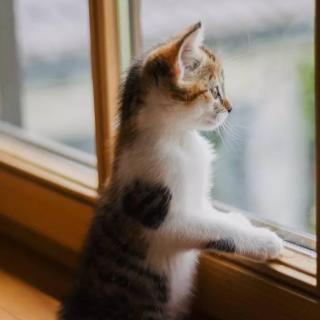
介绍:
Hello,everyone! welcome to the English broadcasting station of Yuncheng university,this FM85.0,I am Shirley.
Inspired by eastern and western philosophy, the German pilates, who was born weak and sickly, created a new movement in the early 20th century by combining yoga's concentration on the mind a.nd breathing with physical gymnastics and other sports. Let's take a look at pilates
A History of Pilates Joseph
Pilates was a fitness guru and inventor born in 1883 near the northern German city of Dusseldorf. His father was a prizewinning gymnast of Greek ancestry. His mother was a naturopath, who believed in stimulating the body to heal itself without drugs or surgery. His mother's healing philosophy and father's physical achievements were to greatly influence Pilates' ideas on therapeutic exercise.
Pilates was a sickly child, suffering from asthma, rickets, and rheumatic fever. To make matters worse, the bigger children at school taunted him by making fun of his name. He became determined to overcome his physical disadvantages, and dedicated his life to improving his health and strength. He focused on breathing techniques to assist with his asthma, and by exercising outside in his shorts, was able to cure his rickets which is caused by a vitamin D deficiency.
By the age of 14, he was fit enough to pose for anatomical charts. He loved skiing and being outdoors. He studied bodybuilding, yoga, martial arts, and gymnastics. You can recognize the influence of these activities in the Pilates technique. For example, the long stretch and up stretch on the Reformer are drawn from " downward-facing dog" and " plank" in yoga. He uses punching and sidekick movement similar to martial arts. And some exercises on the chair are similar to gymnastic ring work. The natural movements of animals also inspired him and this can be seen in exercises such as the cat stretch on the Cadillac.
In 1912, Joseph Pilates moved to England and earned a living as a professional boxer, circus performer, and self-defense trainer at Scotland Yard. During World War I, however, the British authorities interned him, along with other German citizens, in a British Enemy Citizens' Camp on the Isle of Man. The health conditions in these camps were poor, but Pilates insisted that everyone in his cellblock participate in daily exercise routines, which he had devised to help maintain their physical and mental well-being.
Some of the injured German soldiers were too weak to get out of bed. Not content to leave his comrades lying idle, Pilates took springs from the beds and attached them to the headboards and footboards of the iron bed frames, turning them into equipment that provided a type of resistance exercise for his bedridden patients.
These mechanized beds were the forerunners of the spring-based exercise machines, such as the Cadillac and the Reformer, for which the Pilates method is known today. Pilates legend has it that during the great flu epidemic of 1918, not a single soldier under his care died. Remarkable! Considering the terrible living conditions of the internment camps.
After the war, Joseph returned to Germany and collaborated with experts in dance and physical exercise, such as Rudolf Laban. In Hamburg, he trained police officers. He was also pressured to train members of the German army, but left his native Germany, disappointed with its political and social conditions, and immigrated to the United States. En route, he met his future wife, a young nurse named Clara. The couple founded a studio in New York City and taught and supervised their students well into the 1960s.
His method, which he and Clara originally called Contrology, encouraged the mind to control muscles. It focused attention on core postural muscles that help keep the body balanced and provide support for the spine. In particular, Pilates exercises teach awareness of breath and of alignment of the spine, and strengthen the deep torso and abdominal muscles. Pilates came to believe that modern lifestyle, bad posture, and inefficient breathing lay at the roots of poor health. Joseph Pilates' New York gym put him in close proximity to a number of dance studios, which led to his discovery by prominent members of the dance community, including George Balanchine and Martha Graham.
The Pilates repertoire itself has many references to classical ballet and also the Graham technique. For example, the ballet stretches on the Cadillac and Ladder Barrel, the round back and straight back in the stomach massage series on the Reformer. Many dancers, actors, and famous people in New York depended on Pilates for the strength and grace it developed, as well as for its rehabilitative effects. Joseph Pilates wrote two books, Your Health and Return to Life through Contrology, and was also a prolific inventor. He passed away in 1967 at the age of 83 in New York. He had maintained a fit physique throughout his life, and photographs show that he was in remarkable physical condition in his older years.
He is also said to have had a flamboyant personality. He smoked cigars, liked to party, and wore his exercise briefs wherever he wanted—even on the streets of New York. It's said that he was an intimidating, though deeply committed, instructor. Although Joseph and Clara had no children, his legacy and exercise techniques were preserved and developed through the work of his disciples. These disciples who started out as their apprentices are now called the Elders. Until exercise science caught up with the Pilates method in the 1980s, it was chiefly dancers and elite athletes who utilized the Pilates technique. Now, Pilates has made it to the mainstream, with its health benefits and mental discipline widely recognized as being of great benefit to the health and well-being of all types of people, no matter their shape, size, gender or age.
Today, Joseph Pilates teachings are carried on by the Pilates Elders, their progeny, and by a large group of contemporary teachers all over the world
Thank you for listening,I am your friend Shirley,see you next time!
大家还在听

